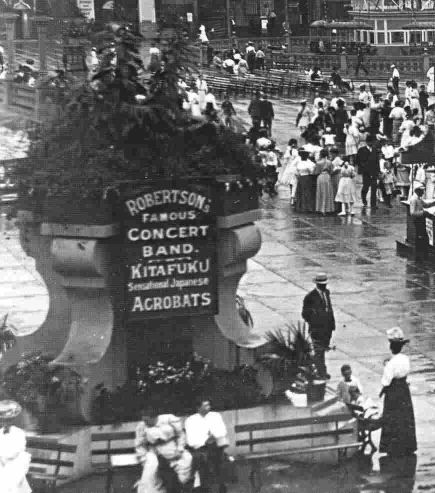A First Year Tour of Cleveland’s Luna Park (page 1 of 3)
This aerial overview was taken after 1905, but provides an orientation of the entire park. Locate the oval shaped lagoon at the left in the picture. It is a focal point of the park. Notice the walking bridge over the lagoon at the far left of the picture. This is the "back" of the park.
Just behind the lagoon on the left is the plaza. Pagoda style buildings of the Japanese Exposition are adjacent to the plaza. In front of the lagoon are attractions that were built after 1905, including the Ferris Wheel.
To the right of the lagoon is the midway. The stairs to enter the park are on the far right. The baseball field is in the upper right corner of the picture.
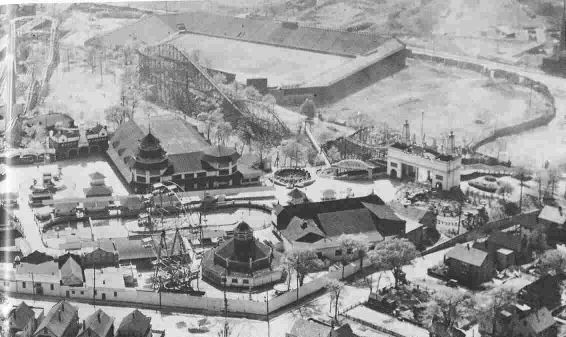
The entrance: Guests arrived at Luna from Ingersoll Road. Those arriving by automobile (Cleveland was at the time a major automobile manufacturing center) parked on the street or in the field on the corner of Ingersoll and Woodhill Road (in later years the grounds inside the park on the opposite side of the tall board fence would be used as a parking lot).
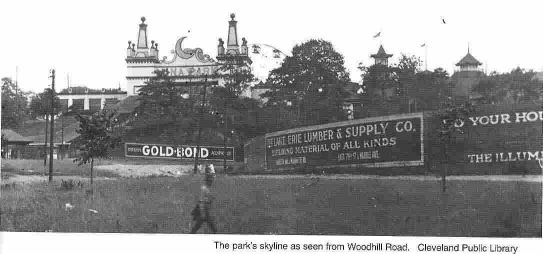
This field, being outside the park fence, was often used to host professional baseball games as a promotional to attract visitors to Luna (this fence also hosted advertising billboards that provided some added revenue for the park). Most visitors came by Trolley however, and a special layover loop and depot was built above the field on the grounds just below the entrance staircase. Cleveland had a fabulous trolley system, and several major lines passed alongside the Luna Park property.
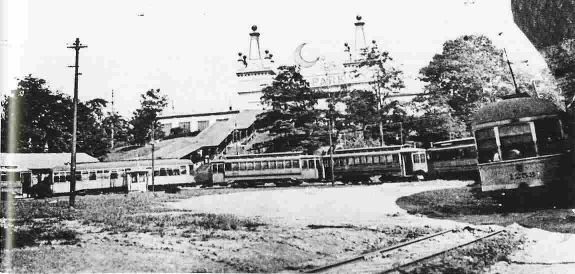
After paying an entrance admission (you also had to pay separately for each ride, although in later years Luna would be one of the first parks to offer an optional combination "pay one price" ticket for entrance/unlimited-rides), you were faced with a climb of three flights of stairs to get from the bottom of the ravine to the top where the majority of the park resided. Soon Luna would cover the stairs and replace the lower staircase with one of the earliest examples of a moving staircase (escalator) to help ease the climb.
At the top of the stairs you were greeted with a huge landmark archway over 150 feet wide, topped by obelisks and a giant crescent moon (the moon was the Luna chains trademark). The archway was painted in bright white and gold, and illuminated by ten thousand electric lights. An illuminated sign read "Ingersoll’s Luna Park", and on the opposite side of the arch was an illuminated heart-shaped sign that read "Good Night".
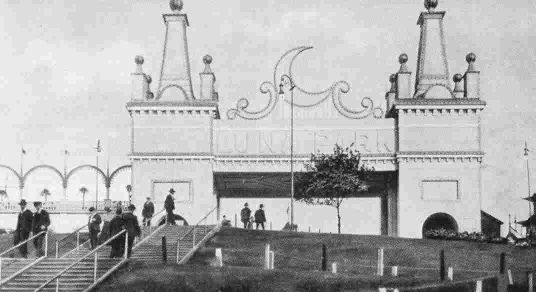
Once through the archway you entered the main midway, in the heart of the park below the lagoon. To the immediate left of the archway was Luna Parks well regarded Café. Next to the Café were a series of shops and entertainments, such as the Arcadia fun house and the exotic Candy Butcher Shop. At the "butcher shop" white-aproned attendants sold sausages, hot dogs, ham sandwiches, pork chops, cheeses, and other items from glass cases, every one of which was made from carefully formed and colored candy! Luna was expected to be different, and even the food concessions lived up to this image. This part of the midway was situated at an angle, but turned to a normal alignment with the remainder of the park.
After the turn in the midway came more shops and entertainments, including a .22 caliber Rifle Range (shooting gallery) and the Scenitorium, a motion picture theater that also hosted vaudeville acts and chorus girl shows. The large tower at the end of the structure housed the Taffy Shop (selling taffy, popcorn, and other treats that could be easily carried home on a streetcar).
Sometime after opening day, in the center of the midway at the base of the lagoon, a massive kiosk listing the day’s entertainments such as concert schedules was completed.
